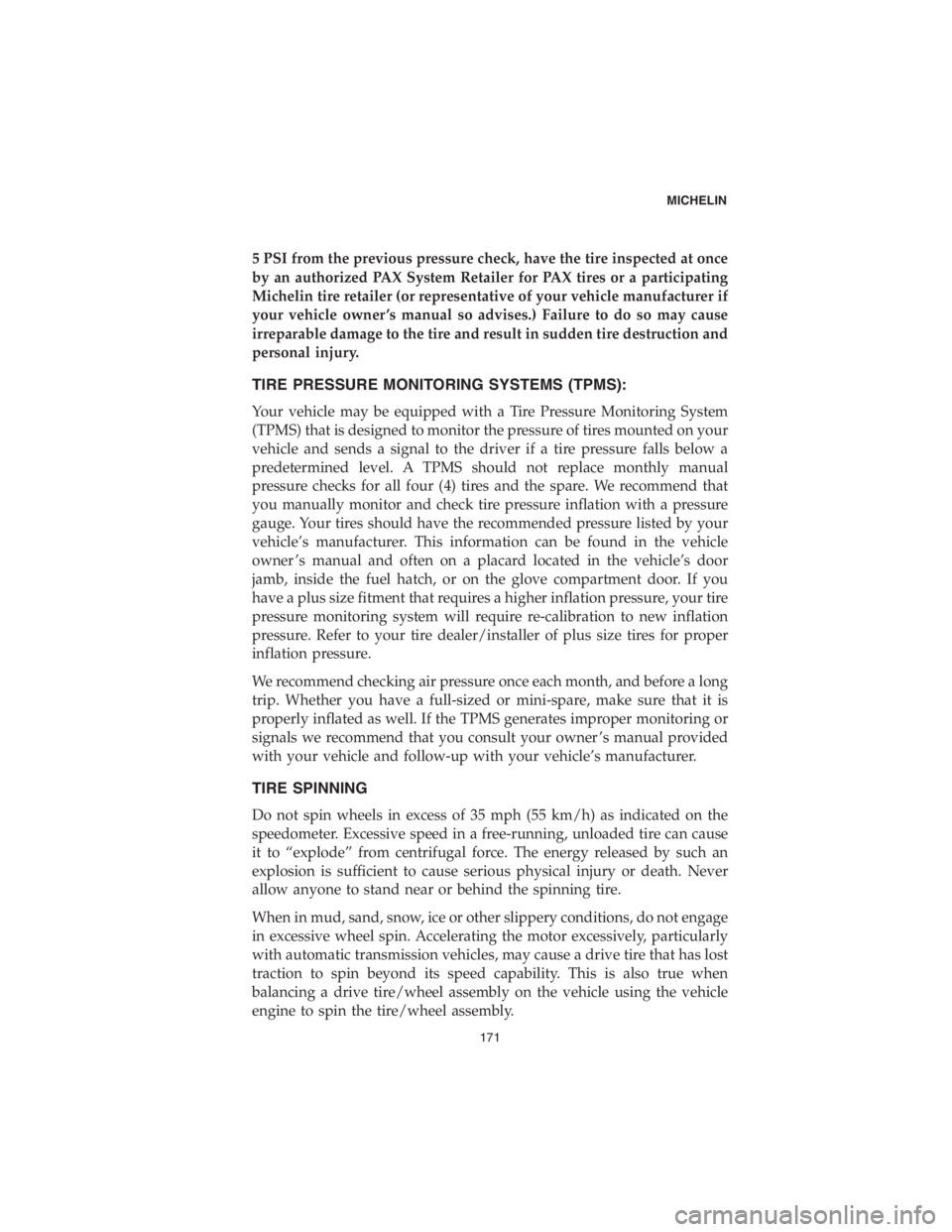fuel cap release CHRYSLER 300 2018 Vehicle Warranty
[x] Cancel search | Manufacturer: CHRYSLER, Model Year: 2018, Model line: 300, Model: CHRYSLER 300 2018Pages: 316, PDF Size: 3.15 MB
Page 172 of 316

5 PSI from the previous pressure check, have the tire inspected at once
by an authorized PAX System Retailer for PAX tires or a participating
Michelin tire retailer (or representative of your vehicle manufacturer if
your vehicle owner ’s manual so advises.) Failure to do so may cause
irreparable damage to the tire and result in sudden tire destruction and
personal injury.
TIRE PRESSURE MONITORING SYSTEMS (TPMS):
Your vehicle may be equipped with a Tire Pressure Monitoring System
(TPMS) that is designed to monitor the pressure of tires mounted on your
vehicle and sends a signal to the driver if a tire pressure falls below a
predetermined level. A TPMS should not replace monthly manual
pressure checks for all four (4) tires and the spare. We recommend that
you manually monitor and check tire pressure inflation with a pressure
gauge. Your tires should have the recommended pressure listed by your
vehicle’s manufacturer. This information can be found in the vehicle
owner ’s manual and often on a placard located in the vehicle’s door
jamb, inside the fuel hatch, or on the glove compartment door. If you
have a plus size fitment that requires a higher inflation pressure, your tire
pressure monitoring system will require re-calibration to new inflation
pressure. Refer to your tire dealer/installer of plus size tires for proper
inflation pressure.
We recommend checking air pressure once each month, and before a long
trip. Whether you have a full-sized or mini-spare, make sure that it is
properly inflated as well. If the TPMS generates improper monitoring or
signals we recommend that you consult your owner ’s manual provided
with your vehicle and follow-up with your vehicle’s manufacturer.
TIRE SPINNING
Do not spin wheels in excess of 35 mph (55 km/h) as indicated on the
speedometer. Excessive speed in a free-running, unloaded tire can cause
it to “explode” from centrifugal force. The energy released by such an
explosion is sufficient to cause serious physical injury or death. Never
allow anyone to stand near or behind the spinning tire.
When in mud, sand, snow, ice or other slippery conditions, do not engage
in excessive wheel spin. Accelerating the motor excessively, particularly
with automatic transmission vehicles, may cause a drive tire that has lost
traction to spin beyond its speed capability. This is also true when
balancing a drive tire/wheel assembly on the vehicle using the vehicle
engine to spin the tire/wheel assembly.
MICHELIN
171